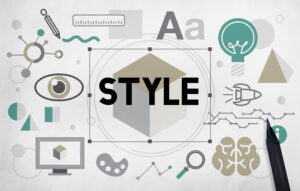Graphic designing is the art of creating visual content to communicate messages effectively. Using a combination of typography, imagery, color, and layout techniques, graphic designers craft compelling visuals for branding, marketing, digital platforms, and more. It is a creative field that enhances communication and engagement.

What is graphic designing?
Graphic designing involves the strategic use of visuals to convey a message, evoke emotions, or create brand identities. It spans various mediums, including print, digital, and motion graphics, making it an essential component in industries such as advertising, publishing, web development, and entertainment.
Key Elements of Graphic Designing:

- Typography—The art of arranging text in a visually appealing manner.
- Color Theory—Understanding how colors interact and influence perception.
- Imagery—Using illustrations, photos, and icons to enhance visual appeal.
- Composition & Layout—Structuring elements for better readability and design balance.
- Branding—Creating a consistent identity through logos, packaging, and marketing materials.
Importance of Graphic Designing
Graphic designing plays a crucial role in multiple industries by:
- Enhancing Brand Identity—Logos, business cards, and promotional materials help businesses stand out.
- Improving User Experience (UX) – Web and app design ensure seamless navigation.
- Boosting Marketing Strategies—Visually engaging ads and social media posts attract and retain audiences.
- Simplifying Complex Information—Infographics and visual storytelling make data easy to understand.
Career Opportunities in Graphic Designing
The demand for skilled graphic designers continues to grow. Some of the top career paths include:
1. Graphic Designer
- Creates digital and print media designs, including brochures, banners, and posters.
- Works with tools like Adobe Photoshop, Illustrator, and InDesign.
- Salary Range: 1.5 Lakh to 7.9 Lakhs per year (Salaries by Ambition Box ).
2. UI/UX Designer
- Focuses on designing interactive and user-friendly interfaces for websites and apps.
- Uses tools like Figma, Sketch, and Adobe XD.
- Collaborates with developers to enhance user experience.
3. Brand Identity Designer
- Specializes in designing logos, brand guidelines, and visual identities for companies.
- Ensures consistency in branding across all platforms.
4. Motion Graphics Designer
- Creates animated visuals for advertisements, movies, and digital marketing.
- Works with software like After Effects, Blender, and Cinema 4D.
5. Freelance Graphic Designer
- Works independently on diverse projects for clients worldwide.
- Platforms like Fiverr, Upwork, and Behance offer opportunities to showcase work.
- Potential for high earnings with a strong portfolio.
Graphic Designing in Different Industries
Graphic design is a versatile field with applications in multiple industries:
- Advertising & Marketing—Businesses use graphic design for promotional campaigns and branding.
- Publishing—Book covers, magazines, and editorial layouts rely on skilled designers.
- Entertainment—Movie posters, album covers, and digital media need creative designers.
- E-commerce—Product packaging, website design, and social media content play a crucial role.
- Technology—Software interfaces, mobile apps, and digital experiences require UI/UX design expertise.
Essential Skills for Graphic Designers
To thrive in this field, aspiring graphic designers should develop the following skills:
- Creativity & Innovation—Ability to generate original and eye-catching designs.
- Technical Proficiency—Mastering tools like Adobe Creative Suite (Photoshop, Illustrator, InDesign).
- Communication Skills—Understanding client requirements and presenting ideas effectively.
- Problem-Solving—Finding design solutions to meet business and marketing needs.
- Time Management—Managing multiple projects and meeting deadlines efficiently.
Future of Graphic Designing
As technology advances, graphic designing is evolving with new trends and innovations:
1. Artificial Intelligence (AI) in Design
- AI-powered tools like Adobe Sensei and Canva’s AI features automate design processes.
- AI-generated designs assist designers in streamlining workflow and improving efficiency.
2. 3D Design & Augmented Reality (AR)

- Brands incorporate 3D elements and AR to create immersive experiences.
- Tools like Blender and Unity help designers bring static images to life.
3. Minimalist & Sustainable Design
- Simplicity and eco-friendly design choices are becoming more prevalent.
- Companies focus on using sustainable materials and minimalistic branding.
4. Motion Graphics & Animation Growth
- Demand for animated content in marketing, social media, and entertainment is rising.
- Designers skilled in motion graphics have a competitive advantage.
Graphic designing is a dynamic field that blends creativity with technology. It plays a crucial role in branding, marketing, user experience, and storytelling across multiple industries. With the rise of AI, AR, and interactive design, the future of graphic design looks promising.
If you are passionate about design and storytelling, now is the perfect time to explore a career in graphic design. Whether you choose to work for a company or go freelance, the opportunities in this field are endless.
Want to learn graphic design? Contact us for expert guidance and career mentorship!
